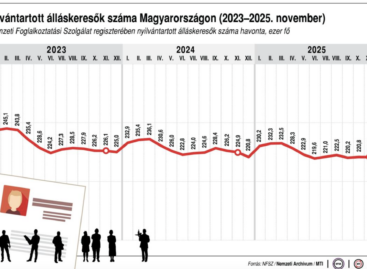Randstad “HR Trends 2023”: the corporate sector’s expectations for this year are mixed
The management of domestic companies is looking ahead to 2023 with more cautious expectations, according to Randstad’s latest “HR Trends 2023” research, which aims to provide insight into the adaptation of companies operating in Hungary to the current economic situation and the HR challenges they face.
Only 41% of the nearly 250 companies participating in the research, mostly medium and large, expect an increase in their company’s net sales – compared to 61% last year. The majority of the research participants believe that the biggest problems of the year will be increased wage costs due to inflation and higher operating costs, which they plan to respond to through different strategies.
The experts interviewed are not optimistic about HR issues either. It is telling that while last year 89% planned to increase the number of employees, this year only 34% said so. Wages are a key issue in the labor market this year as well: employee expectations still do not meet the level of wage increases planned by companies, this gap has continued to grow since last year. The good news is that, while last year only 83 percent of companies wanted to increase, this year practically everyone (97%) did.
Related news
Profession.hu: Half of employers do not plan to raise salaries next year
🎧 Hallgasd a cikket: Lejátszás Szünet Folytatás Leállítás Nyelv: Auto…
Read more >The Hungarian labor market remains tight
🎧 Hallgasd a cikket: Lejátszás Szünet Folytatás Leállítás Nyelv: Auto…
Read more >Generations and perceptions: people from different generations like office work for different reasons
🎧 Hallgasd a cikket: Lejátszás Szünet Folytatás Leállítás Nyelv: Auto…
Read more >Related news
Hungarian Product is 20 years old – a reliable compass in the domestic FMCG sector
🎧 Hallgasd a cikket: Lejátszás Szünet Folytatás Leállítás Nyelv: Auto…
Read more >KPMG CEO Outlook 2025: replanned trust
🎧 Hallgasd a cikket: Lejátszás Szünet Folytatás Leállítás Nyelv: Auto…
Read more >Sunday lockdowns may return in Europe
🎧 Hallgasd a cikket: Lejátszás Szünet Folytatás Leállítás Nyelv: Auto…
Read more >






